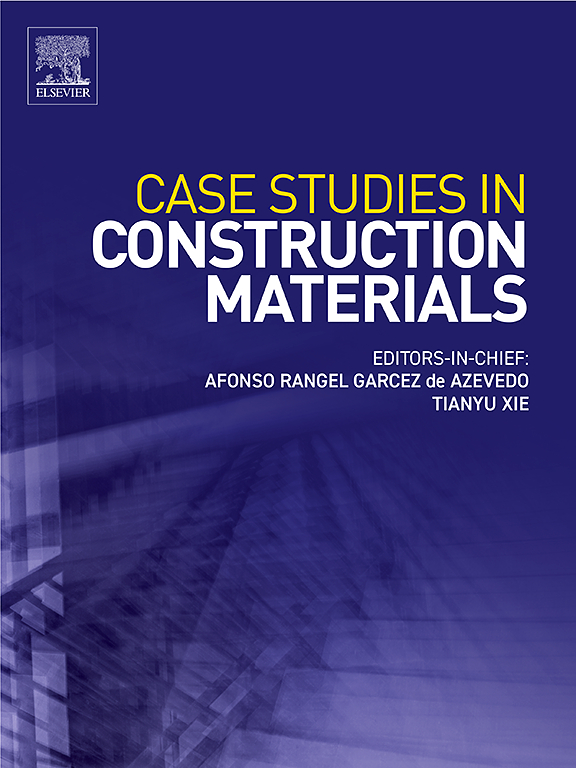Strengthening of unreinforced masonry buildings with ferrocement composite overlay: Material characterization and numerical study
IF 6.5
2区 工程技术
Q1 CONSTRUCTION & BUILDING TECHNOLOGY
引用次数: 0
Abstract
The nonlinear assessment of masonry buildings strengthened with composites is crucial for evaluating retrofitting effectiveness prior to practical implementation. However, numerical tools for analyzing cost-efficient solutions like ferrocement remain scarce. The present study addresses this gap by introducing a simple yet effective 3D macro-modeling approach for simulating ferrocement-strengthened masonry structures. At first, the proposed finite element (FE) model was validated against experimental data, demonstrating its reliability in replicating the lateral load behavior. The validated model was then used to evaluate the efficacy of an optimal ferrocement strengthening configuration implemented in a ‘Splint and Bandage’ arrangement based on standardized guidelines. Relevant material properties essential for this investigation was comprehensively evaluated and utilized in the numerical model. The analysis revealed significant improvements in lateral load performance, including enhanced strength, ductility, and energy absorption capacity, with negligible impact on structural stiffness due to minimal added mass. Additionally, the strengthening effectively transformed the failure mode from a mixed compression-shear-flexural mechanism to a stable flexural rocking mode, significantly reducing stress concentrations and masonry damage. This study demonstrates the effectiveness of ferrocement bands as a cost-effective strengthening solution for unreinforced masonry buildings in seismically active regions. The findings provide valuable insights for optimizing ferrocement strengthening designs, making this approach particularly relevant for improving the lateral load performance of vulnerable masonry structures.
铁板复合覆盖层加固无加固砌体建筑:材料特性和数值研究
复合材料加固砌体建筑的非线性评估是在实际实施前评估加固效果的关键。然而,用于分析成本效益的解决方案(如铁处理)的数值工具仍然很少。本研究通过引入一种简单而有效的三维宏观建模方法来模拟铁加固砌体结构,从而解决了这一差距。首先,根据实验数据对所提出的有限元模型进行了验证,证明了其在模拟横向荷载行为方面的可靠性。然后使用经过验证的模型来评估基于标准化指南的“夹板和绷带”安排中实现的最佳铁强化配置的有效性。在数值模型中综合评价和利用了本研究所必需的相关材料特性。分析显示,侧向载荷性能有了显著改善,包括强度、延展性和能量吸收能力的增强,而由于增加的质量很小,对结构刚度的影响可以忽略不计。此外,加固有效地将破坏模式从混合压缩-剪切-弯曲机制转变为稳定的弯曲摇摆模式,显著降低了应力集中和砌体损伤。本研究表明,在地震活跃地区,钢筋混凝土带作为一种经济有效的加固方案,对未加筋的砌体建筑是有效的。研究结果为优化钢筋混凝土加固设计提供了有价值的见解,使这种方法特别适用于改善脆弱砌体结构的横向荷载性能。
本文章由计算机程序翻译,如有差异,请以英文原文为准。
求助全文
约1分钟内获得全文
求助全文
来源期刊

Case Studies in Construction Materials
Multiple-
CiteScore
7.60
自引率
19.40%
发文量
842
审稿时长
63 days
期刊介绍:
Case Studies in Construction Materials provides a forum for the rapid publication of short, structured Case Studies on construction materials. In addition, the journal also publishes related Short Communications, Full length research article and Comprehensive review papers (by invitation).
The journal will provide an essential compendium of case studies for practicing engineers, designers, researchers and other practitioners who are interested in all aspects construction materials. The journal will publish new and novel case studies, but will also provide a forum for the publication of high quality descriptions of classic construction material problems and solutions.
 求助内容:
求助内容: 应助结果提醒方式:
应助结果提醒方式:


